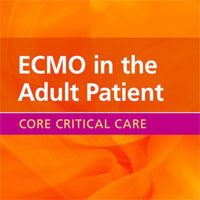Stories Category: Intensive Care
Iloprost and Organ Dysfunction in Adults With Septic Shock and Endotheliopathy
In this randomized clinical trial of adults in the ICU with septic shock and severe endotheliopathy, infusion of iloprost, 1 ng/kg/min, for 72 hours did not reduce mean daily SOFA scores compared with placebo. In a clinical... read more
Human albumin solution for on-pump cardiac surgery: benefit or burden?
Deidentified individual participant data collected during the HAS FLAIR-II trial (and the data dictionary) will be shared beginning two years after article publication with no end date. These data will be available to... read more
Improving Patient Outcomes: Sepsis Protocols and Rapid Host Response Technologies
Patients come into the emergency department (ED) with symptoms, not diagnoses. That’s when time is of the essence. Clinicians must quickly triage patients and establish an appropriate care pathway to obtain the best possible... read more
Resuscitation Arterial Waveform Quantification and Outcomes in Pediatric Patients
Providing physiologically adequate CPR for pediatric single ventricle patients palliated with Bidirectional Glenn (BDG) or Fontan physiology is challenging. Only 27% of Fontan patients survived to hospital discharge with... read more
Optimizing Oxygenation For Tracheal Intubation in Critically Ill Patients
Tracheal intubation (TI) is a common procedure frequently performed in critically ill patients and is an integral part of emergency airway management (EAM). However, it carries inherent risks and can significantly impact... read more

Severe Trauma and Sepsis: Organ Damage and Tissue Repair
This book discusses recent progress in organ damage and tissue repair following severe trauma and sepsis. In part 1, it introduces the theory and clinical practice in organ damage. In part 2, it covers all the subjects... read more
Sex Differences in the Outcome of Critically Ill COVID-19 Patients
Among patients admitted to ICU for severe COVID-19, males experienced higher severity of illness and more frequent intervention than females. Ultimately, the hazard of death was moderately elevated in males compared to females... read more
Feeding Challenges in the ICU
For critically ill patients, timely nutritional support can aid recovery and reduce mortality risk. But what about a patient in septic shock who is receiving vasopressor therapy, or one who requires prone positioning or extracorporeal... read more
Functional Dependence Following ICU-treated Sepsis
Sepsis survivorship was associated with a broad range of new impairments and led to functional dependence in around one quarter of patients. Targeted measures are needed to mitigate the burden of this Post-Sepsis-Syndrome... read more
Veno-Arterial-Venous ECMO in a Patient Undergoing Dialysis and Having Cardiopulmonary Failure Due to COVID-19
COVID-19 can cause cardiomyopathy, a rare cardiovascular disorder that can lead to cardiogenic shock. The cardiac and respiratory symptoms may not occur simultaneously, and it is possible to switch to veno-arterial-venous... read more

ECMO in the Adult Patient (Core Critical Care)
Extracorporeal membrane oxygenation (ECMO) is developing rapidly, and is now part of the toolkit for the management of all patients with severe respiratory or cardiac failure. Clinicians of all disciplines are in need of... read more
Adiposity and Mortality Among ICU Patients with COVID-19 and Non-COVID-19 Respiratory Conditions
Obesity is associated with higher mortality among COVID-19 patients, but lower mortality among non-COVID-19 respiratory patients. These associations appear vulnerable to confounding/selection bias in both patient groups,... read more
Impact of the Timing of Invasive Mechanical Ventilation in Sepsis Patients
In patients with sepsis admitted to ICU and received invasive mechanical ventilation (MV), early MV was associated with lower ICU and in-hospital mortality and a shorter ICU stay. Additionally, at ICU discharge, early... read more
Army Scientists’ Technique for Early Sepsis Detection in Burn Patients Submitted to FDA
A new invention developed at the U.S. Army Medical Research and Development Command uses an artificial intelligence machine learning algorithm to identify whether burn patients are at risk of experiencing life-threatening... read more
Early sodium bicarbonate therapy for critically ill patients with septic shock and acute moderate metabolic acidosis
In recent decades, septic shock has continued to be a life-threatening health problem around the world. Meanwhile, metabolic acidosis (MA) is also well known in critically ill patients, and even moderate metabolic acidosis... read more
Long-term Effects of Flexible Visitation in the ICU on Patients’ Mental Health
Flexible ICU visitation, compared to the restrictive visitation, was associated with a significant reduction in the 1-year prevalence of post-traumatic stress symptoms in family members. A total of 519 family members were... read more
ECLS in Cardiogenic Shock Complicating Acute Myocardial Infarction: Benefit and Harm
Cardiogenic shock is a critical condition that affects up to 10% of patients hospitalized with acute myocardial infarction (AMI), representing the primary cause of death in this group. Recently, frequentist analysis showed... read more








